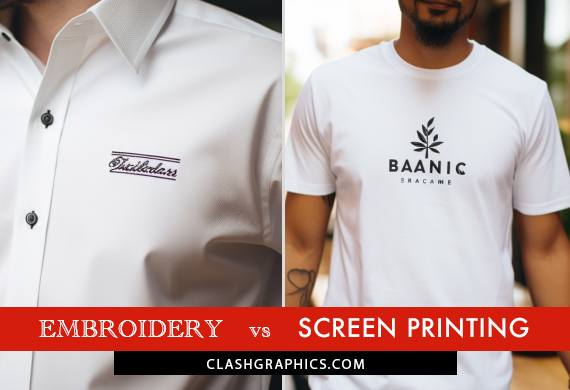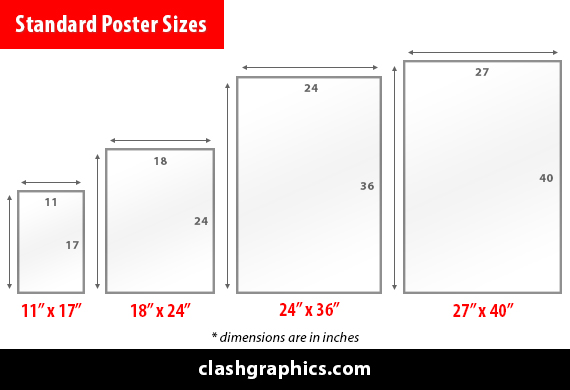QR Code Marketing
Posted by Clash Printing Atlanta on 19th Jun 2024
Looking for a way to connect physical marketing materials to digital experiences? QR code marketing offers a versatile solution. By integrating QR codes, you can enhance customer engagement and track interactions effectively. This article will guide you through the best strategies and techniques for implementing QR codes in your marketing efforts.
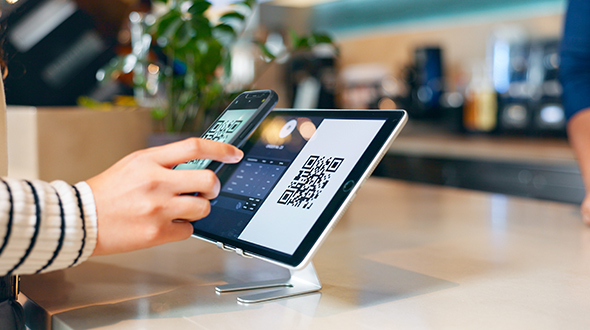
Key QR Code Marketing Takeaways
-
QR codes are powerful tools for bridging the physical and digital marketing gap. They enhance user engagement by providing instant access to online content and interactive experiences.
-
Practical applications of QR codes in marketing include enhancing product packaging, boosting social media engagement, and promoting special offers and discounts, all of which can drive higher customer interaction and sales.
-
Dynamic QR codes provide significant advantages over static versions, including real-time editing and the ability to track detailed analytics. These make them ideal for long-term campaigns and optimizing marketing strategies for better ROI.
Introduction
This article explores strategies and techniques to maximize the impact of your marketing efforts using QR codes. QR codes were initially developed in Japan for the automotive industry. Over time, they have evolved into powerful tools for modern marketing, such as two-dimensional, contactless barcodes. With the ability to quickly link physical items to digital content, QR codes act as digital keys, providing easy access to online information and making it simpler for audiences to connect with your brand.
Implementing QR codes in your marketing strategy can transform how customers interact with your brand. Integrating these codes into various touchpoints allows you to create seamless experiences that drive engagement and improve overall marketing performance. Some versatile applications of QR codes include:
-
Enhancing product packaging
-
Boosting social media engagement
-
Providing additional product information
-
Offering exclusive discounts or promotions
-
Facilitating easy event registration or ticket purchase
By leveraging the power of QR codes, you can tailor your marketing efforts to meet specific objectives and provide added value to your customers.
Understanding QR Codes
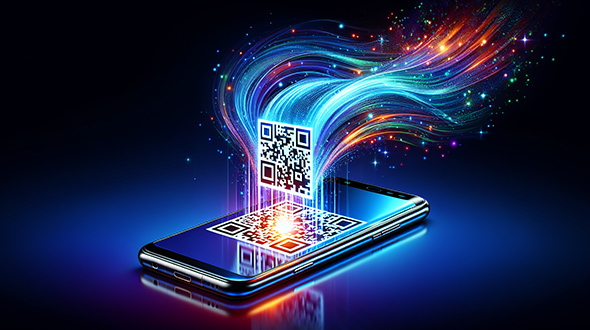
QR codes, short for Quick Response codes, are versatile tools that bridge the gap between the physical and digital worlds. Initially created in Japan for tracking automotive parts, these two-dimensional barcodes have become ubiquitous in various industries due to their ability to store and share information quickly and efficiently. Designed to be scanned by smartphone cameras, QR codes can link to:
-
Websites
-
Contact details
-
Product information
-
Event details
-
Social media profiles
-
Coupons and discounts
-
App downloads
-
Video content
-
Surveys and feedback forms
And much more.
The functionality of QR codes extends far beyond simple URL redirection. They can store various types of data, including:
-
text
-
email addresses
-
phone numbers
-
Wi-Fi network credentials
By placing QR codes on physical items like brochures or product packaging, businesses can offer customers instant access to digital content with just a simple scan. This seamless connection enhances user engagement, making QR codes an invaluable asset in modern marketing campaigns.
Benefits of QR Code Marketing

Integrating QR codes into marketing strategies offers numerous benefits that can significantly enhance user engagement and drive traffic. Some of the primary advantages include:
-
The ability to create interactive experiences that capture users' curiosity and encourage them to engage with your brand
-
QR codes act as digital keys, providing users with a quick and effortless way to access online content
-
Simplifying the connection between physical and digital channels
Moreover, QR codes enable businesses to:
-
Track and analyze marketing performance meticulously
-
Collect detailed metrics such as scan time, location, and device type
-
Gain valuable insights into consumer behavior and preferences
-
Refine marketing strategies
-
Optimize content delivery
-
Improve ROI
This information can be leveraged to fine-tune marketing strategies, enhance content delivery, and ultimately boost ROI.
Additionally, QR codes are mobile-friendly and cost-effective, making them an ideal tool for reaching a broad audience and enhancing customer engagement across various platforms, including mobile devices.
Effective Ways to Use QR Codes in Marketing Campaigns
QR codes can be seamlessly integrated into various aspects of marketing campaigns to drive engagement and achieve marketing objectives. From enhancing product packaging to boosting social media engagement and promoting special offers, QR codes offer versatile applications that can transform traditional marketing efforts into interactive experiences.
Let's explore some of the most effective ways to use QR codes in your marketing campaigns, including how to implement marketing QR codes, where to place QR codes strategically, and how to scan QR codes for optimal results.
Enhancing Product Packaging
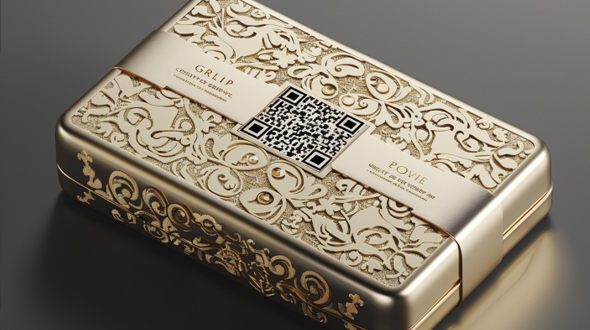
Incorporating QR codes into product packaging is an innovative way to provide consumers with additional information and interactive experiences. Leading brands have successfully used QR codes on packaging to offer detailed product guides, recipes, and even video tutorials. This approach not only enriches the consumer experience but also encourages brand loyalty by providing valuable content.
For example, Wendy's has effectively integrated QR codes into their packaging to increase mobile conversions. By scanning the QR code, customers can access exclusive deals, nutritional information, and promotional content, enhancing their overall experience with the brand. This demonstrates how QR codes can bridge the gap between physical products and digital content, making marketing efforts more engaging and informative.
Boosting Social Media Engagement
QR codes are powerful tools for driving social media engagement, as they can direct users to social media profiles, posts, and exclusive content with just a scan. By embedding QR codes on product tags, labels, or in-store signage, brands can create a direct line to their social media channels, enriching the customer experience and increasing engagement.
Retailers and brands can also use QR codes in videos or landing pages to guide audiences to their social media profiles. This not only boosts social media standing but also drives traffic to websites and online stores, streamlining the user journey and potentially increasing conversions.
Adding social media QR codes to storefront windows or flyers allows for easy connection to platforms like Twitter or Instagram, further enhancing customer interaction and brand visibility.
Promoting Special Offers and Discounts
QR codes are highly effective for promoting special offers and discounts. They provide instant access to promotions and entice customers to make purchases. By placing QR codes on print advertisements, flyers, or even electronic receipts, brands can distribute coupons and special deals directly to consumers. This approach addresses the challenge of coupon distribution and encourages immediate engagement with promotional content.
For example, embedding QR codes in customer account summaries or on product packaging can drive repeat purchases by linking directly to special offers and discounts. This not only enhances customer satisfaction but also boosts sales by providing a seamless and convenient way to access promotions. The use of QR codes in marketing campaigns makes it easy to distribute and redeem discounts, ultimately driving customer engagement and sales growth.
Creating Dynamic QR Codes
Dynamic QR codes offer a significant advantage over static QR codes due to their flexibility and ability to track performance. Unlike static codes, dynamic QR codes can be:
-
Edited and updated in real-time without needing to reprint the codes
-
Change the linked content or URLs as needed
-
Ideal for long-term campaigns where information might need to be adjusted frequently
This makes dynamic QR codes a valuable tool for marketers, as they can be easily scanned using a QR code reader.
Moreover, dynamic QR codes provide detailed analytics to help marketers understand customer behavior and preferences. Businesses can gain valuable insights that inform future marketing strategies by tracking scan data such as time, location, and device type. The ability to capture and measure advertising statistics in real time makes dynamic QR codes a powerful tool for optimizing campaign performance and ensuring that marketing efforts are as effective as possible.
Best Practices for QR Code Design

Designing QR codes effectively ensures they are easily scannable and engaging for users. Some key considerations include:
-
Size: The QR code should be large enough to be easily scanned, with a minimum recommended size of 2 cm x 2 cm.
-
Placement: QR codes should be positioned in prominent locations where they are likely to be noticed and associated with relevant content.
-
Contrast: The QR code should contrast highly with its background to ensure readability.
-
Error correction: Adding error correction to the QR code can help improve its readability, especially if it gets damaged or distorted.
-
Testing: Always test the QR code before finalizing it to ensure that it scans correctly and leads to the intended content.
By following these guidelines, you can design QR codes that are effective and user-friendly.
Customizing QR codes with brand logos and colors can enhance their visual appeal and make them more memorable. However, it's important to maintain a high contrast between the code and its background to ensure optimal scanning. Additionally, incorporating a quiet zone around the QR code helps distinguish it from surrounding elements, improving scan reliability.
By following these best practices, businesses can create QR codes that are both functional and visually appealing, driving higher engagement rates.
Case Studies of Successful QR Code Marketing Campaigns
Real-life examples of successful QR code campaigns can provide valuable insights and inspiration for your marketing efforts. Brands like Taco Bell, Netflix, and Heinz have effectively used QR codes to engage customers, drive sales, and promote sustainability.
Let's examine some of these case studies to understand how QR codes can be used for marketing success.
Taco Bell's Doritos Locos Tacos Campaign
Taco Bell's Doritos Locos Tacos campaign is a prime example of how dynamic QR codes can be used to engage customers and drive sales. The campaign featured QR codes on promotional materials linked to dynamic content, updated weekly to keep the engagement fresh and continuous. This approach not only increased sales but also built brand awareness by regularly providing customers with new and exciting content.
By using dynamic QR codes, Taco Bell was able to track customer interactions and adjust its marketing strategies in real-time. This data-driven approach ensured the campaign remained relevant and engaging, ultimately driving higher customer engagement and sales growth.
The success of this campaign highlights the potential of QR codes to create dynamic and interactive marketing experiences.
Netflix's Gilmore Girls Pop-Up Coffee Shops
Netflix's Gilmore Girls pop-up coffee shops used QR codes to create a unique and interactive customer experience. Visitors could scan QR codes to unlock a special Gilmore Girls filter on Snapchat, adding a fun and engaging digital element to their visit. This not only enhanced the in-store experience but also encouraged social media sharing, boosting brand visibility and engagement.
The QR codes also provided access to exclusive digital content related to the show, further enriching customer interaction. This innovative use of QR codes demonstrates how they can be leveraged to create memorable and shareable experiences that drive customer engagement and brand loyalty.
By integrating QR codes into their marketing strategy, Netflix was able to connect with fans in a meaningful and interactive way.
Heinz's Eco-Friendly Initiative
Heinz utilized QR codes in their 'Join the Growing Movement' campaign to promote eco-friendly practices and engage customers in sustainability initiatives. When customers scanned the QR code, they were directed to a pledge page where they could commit to sustainable actions and share their pledges on social media. This not only raised awareness about eco-friendly practices but also encouraged customer participation and social sharing.
In addition, Heinz has promised to plant trees for every pledge made, allowing customers to impact the environment through their actions positively. This initiative allows customers to contribute to a greener planet directly. This campaign exemplifies how QR codes can promote social and environmental causes, driving customer engagement and making a positive impact.
Tools for Generating QR Codes
Various tools are available for generating QR codes, each offering different features and customization options to suit diverse marketing needs. Canva's QR Code generator, for example, allows users to create unlimited static QR codes with basic customization options such as changing background and foreground colors. For more advanced needs, Uniqode's QR Code generator supports dynamic QR codes that can update destination links later and offer personalized QR codes triggered by smart rules based on time, day, or device. With the growing demand for these tools, QR code generators have become essential to modern marketing strategies.
Other tools like QRCodeChimp and QR Code Monkey focus on creating static QR codes with options for adding logos and using pre-built templates. QR TIGER offers a wide range of QR code solutions, including options to add a logo and create various types of QR codes, such as PDF, image, and video. By selecting the right QR code generator, businesses can create customized and effective QR codes that meet their specific marketing objectives.
Integrating QR Codes with Other Marketing Channels

Integrating QR codes with other marketing channels can create seamless and interactive user experiences, enhancing the overall effectiveness of marketing campaigns. By incorporating QR codes into email and direct mail campaigns, traditional channels can be transformed into interactive experiences. This can guide recipients directly to desired online content, enhancing engagement and convenience. This approach not only increases engagement but also provides valuable data on customer interactions that can inform future marketing strategies.
QR codes can also be used on printed marketing materials such as brochures, posters, and flyers to direct customers to digital content, providing a seamless transition from offline to online marketing. Event organizers can use QR codes on banners and posters to provide attendees with access to schedules, speaker bios, and interactive surveys, enhancing the event experience. By integrating QR codes with various marketing channels, businesses can create a cohesive and engaging customer journey that drives higher engagement and conversion rates.
Measuring the Success of QR Code Campaigns
Tracking the success of QR code campaigns is essential for refining marketing strategies and ensuring optimal performance. Key metrics for QR code campaigns include:
-
Total scans
-
Unique scans
-
Scan locations
-
Time and date of scans
-
Conversion rates
-
Device types
By analyzing these metrics, marketers can gain valuable insights into user behavior and preferences, allowing them to adjust their strategies for better results.
Tools like Google Analytics can provide detailed insights into scan rates, user demographics, and engagement levels, helping marketers track the effectiveness of their campaigns. Additionally, A/B testing different variables, such as QR code placement or design, can identify the most effective strategies for maximizing engagement. Businesses can continuously optimize their QR code campaigns and achieve their marketing objectives by leveraging advanced analytics tools.
Future Trends in QR Code Marketing
As technology continues to evolve, the future of QR code marketing looks promising with several emerging trends. One such trend is the integration of QR codes with augmented reality (AR) and virtual reality (VR) technologies, which can create immersive experiences for users. This could include everything from virtual try-ons in fashion retail to interactive product demos, significantly enhancing customer engagement.
Another trend is the use of QR codes for contactless payment systems, which offer a secure and convenient way for consumers to complete transactions. As more businesses adopt contactless solutions, QR codes will likely play a crucial role in facilitating these payments, integrating loyalty programs, and providing seamless customer experiences.
Additionally, the integration of QR codes with social media platforms is expected to evolve, offering gateways to exclusive content, promotions, and social commerce opportunities. The trend of contactless interactions will persist, making QR codes a popular solution for hygienic and environmentally conscious marketing.
QR Code Summary
QR codes have proven to be versatile and effective tools in modern marketing. They offer numerous benefits, such as enhanced user engagement, seamless integration of offline and online channels, and valuable data collection for strategy optimization. By incorporating QR codes into various marketing touchpoints, businesses can create interactive and memorable experiences that drive customer engagement and loyalty.

As we move forward, embracing the future trends in QR code marketing, such as augmented reality, contactless payments, and social media integration, will be crucial for staying ahead of the competition. With the right strategies and tools in place, QR codes can transform your marketing efforts and help you achieve your business objectives. Start integrating QR codes into your marketing campaigns today and unlock their full potential.
QR Code Marketing Frequently Asked Questions
What are QR codes, and how do they work?
QR codes are two-dimensional barcodes that can be scanned by smartphones. They link physical items to digital content and provide quick access to online information.
What are the benefits of using QR codes in marketing?
Using QR codes in marketing boosts user engagement, connects online and offline channels, and offers valuable data for optimizing marketing strategies.
How can I use QR codes to boost social media engagement?
QR codes can direct users to your social media profiles, posts, and exclusive content, which can significantly boost engagement and brand awareness.
What are dynamic QR codes, and why are they useful?
Dynamic QR codes can be edited and tracked in real-time, making them ideal for marketing campaigns, as they allow for updates and performance tracking. This makes them very useful for businesses looking to analyze and optimize their marketing efforts.
What are some best practices for designing QR codes?
To design effective QR codes, they must be large enough for reliable scanning, placed prominently, have a dark foreground and light background, and be customized with brand logos and colors for better engagement.
(678) 235-3464

